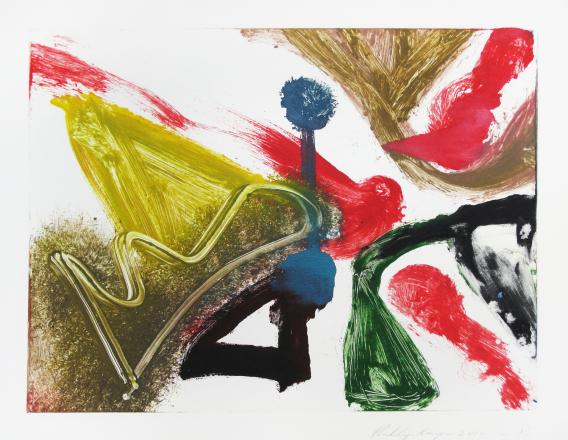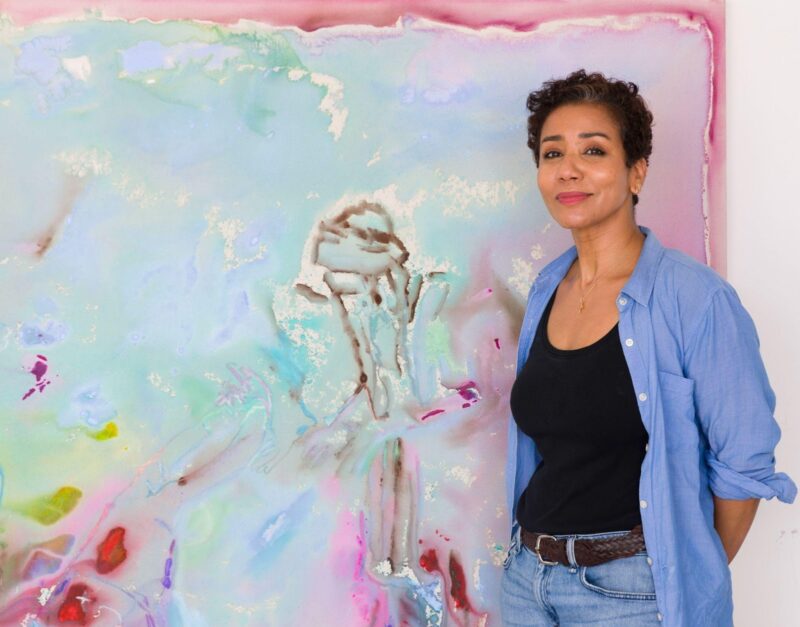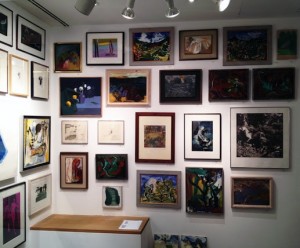
A solo show of colourful prints by Phillip King go on show at Cork Street Flowers.Abstract monotypes will be displayed over the summer.
Until 7th August 2010
Wiki:en.wikipedia.org/wiki/
www.flowerseast.com
Phillip King was born in Tunis in 1934. He studied modern languages as Christ’s College, Cambridge (1954-57), and sculpture at St Martin’s School of Art (1957-58) where Anthony Caro was teaching at the time. Following his studies, he spent a year working as an assistant to Henry Moore and teaching at St Martin’s.
A teacher throughout his career, King was Professor of Sculpture at the Royal College of Art (1980-90) and at the Royal Academy Schools (1990-99). Among other appointments he was a Trustee of the Tate Gallery (1967-69). King was awarded the CBE in 1974, and in 1990 was made a Royal Academician and Professor Emeritus at the Royal College of Art. In 1999 he was elected President of the Royal Academy, a post which he held until 2004.
King’s early works of the 1950s were generally small and made in clay and plaster, and were described as being of a robust, Brutalist and Surrealist nature. In 1962 he started to use fibreglass and colour, and seminal works such as Rosebud 1963, Genghis Khan 1963 and Twilight 1963 brought King’s work to the attention of the art world. These gave way to large- and small-scale abstract sculpture which often combined various materials. In the late 1980s he turned to a more figurative way of working before moving on to make large-scale ceramic vessels using a rough mix of clay and newspaper. During the 1990s King spent long periods working in Japan, learning to make ceramics on a very large scale. Recently he has returned to using colour in his work, covering solid forms with dry pigments and allowing them to drift, making free-formed shapes.
Phillip King is an artist of international standing. He represented Britain at the XXXIV Venice Biennale in 1968, and in 1998 was the first British artist since Henry Moore to be honoured with an exhibition at the Forte di Belvedere in Florence.






